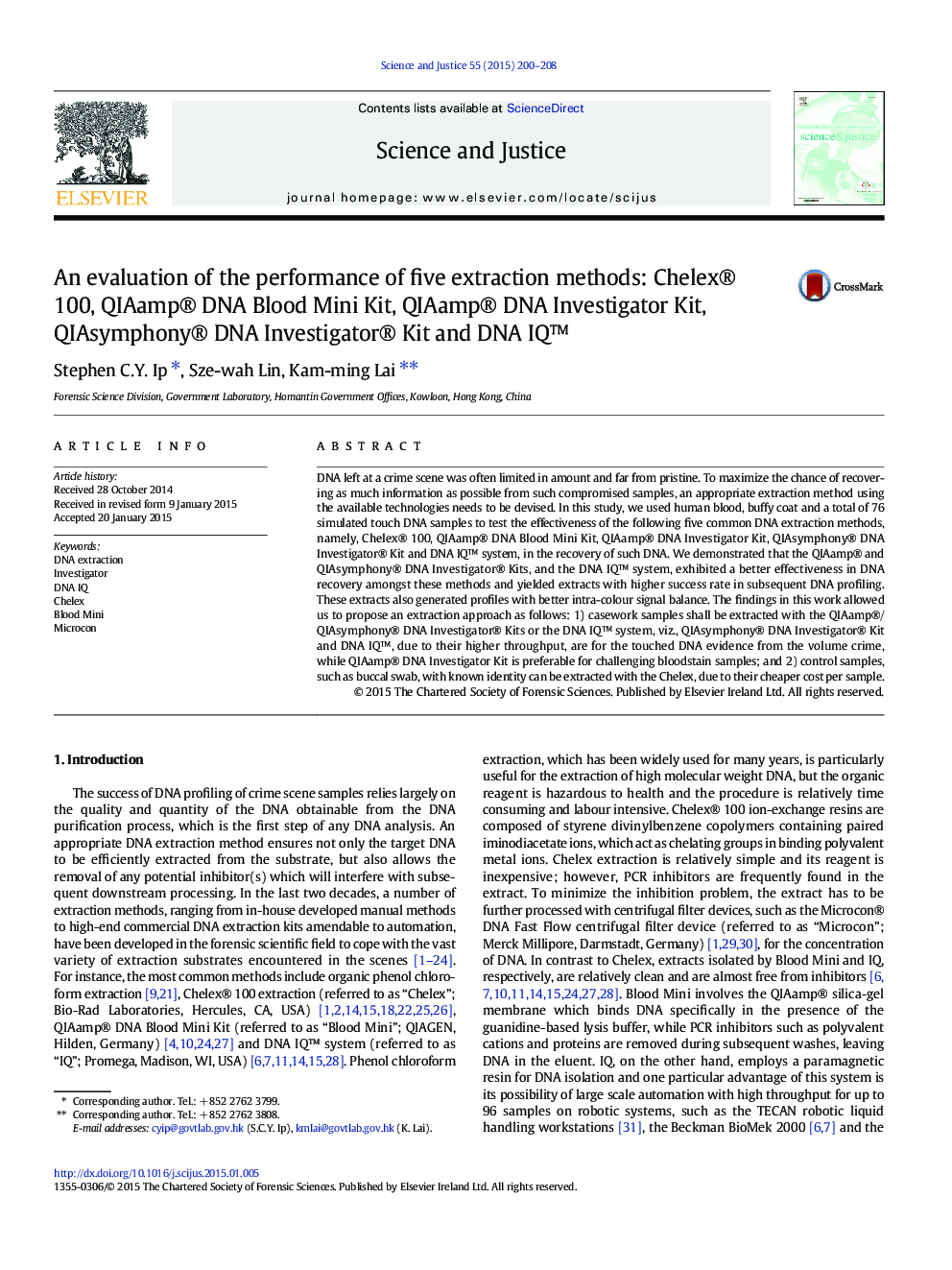| Article ID | Journal | Published Year | Pages | File Type |
|---|---|---|---|---|
| 106955 | Science & Justice | 2015 | 9 Pages |
•The effectiveness of the five common forensic DNA extraction methods is tested in this work.•Investigator and IQ yield extracts with higher success rate in subsequent DNA profiling.•Investigator yields more complete DNA profiles for whole blood samples.•Investigator and IQ improve DNA profiling on both buffy coat and simulated touch DNA samples.
DNA left at a crime scene was often limited in amount and far from pristine. To maximize the chance of recovering as much information as possible from such compromised samples, an appropriate extraction method using the available technologies needs to be devised. In this study, we used human blood, buffy coat and a total of 76 simulated touch DNA samples to test the effectiveness of the following five common DNA extraction methods, namely, Chelex® 100, QIAamp® DNA Blood Mini Kit, QIAamp® DNA Investigator Kit, QIAsymphony® DNA Investigator® Kit and DNA IQ™ system, in the recovery of such DNA. We demonstrated that the QIAamp® and QIAsymphony® DNA Investigator® Kits, and the DNA IQ™ system, exhibited a better effectiveness in DNA recovery amongst these methods and yielded extracts with higher success rate in subsequent DNA profiling. These extracts also generated profiles with better intra-colour signal balance. The findings in this work allowed us to propose an extraction approach as follows: 1) casework samples shall be extracted with the QIAamp®/QIAsymphony® DNA Investigator® Kits or the DNA IQ™ system, viz., QIAsymphony® DNA Investigator® Kit and DNA IQ™, due to their higher throughput, are for the touched DNA evidence from the volume crime, while QIAamp® DNA Investigator Kit is preferable for challenging bloodstain samples; and 2) control samples, such as buccal swab, with known identity can be extracted with the Chelex, due to their cheaper cost per sample.
